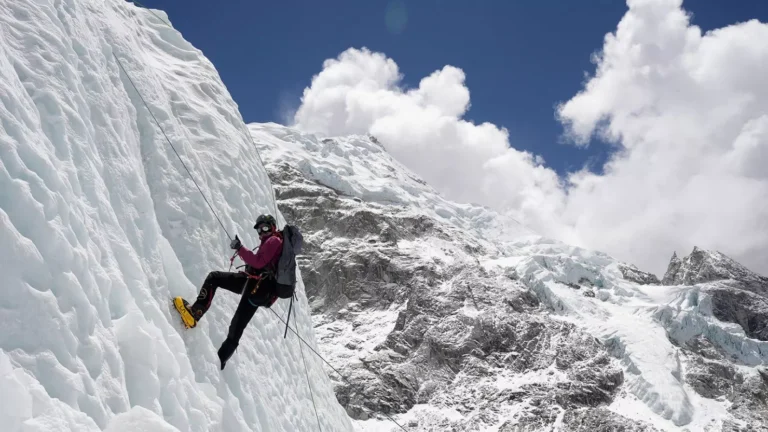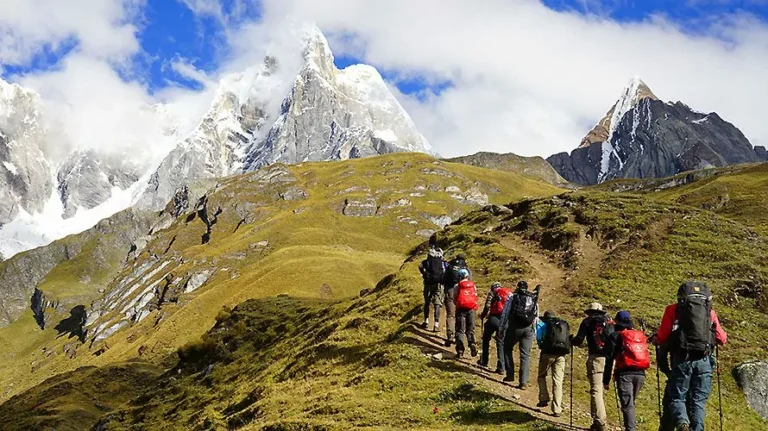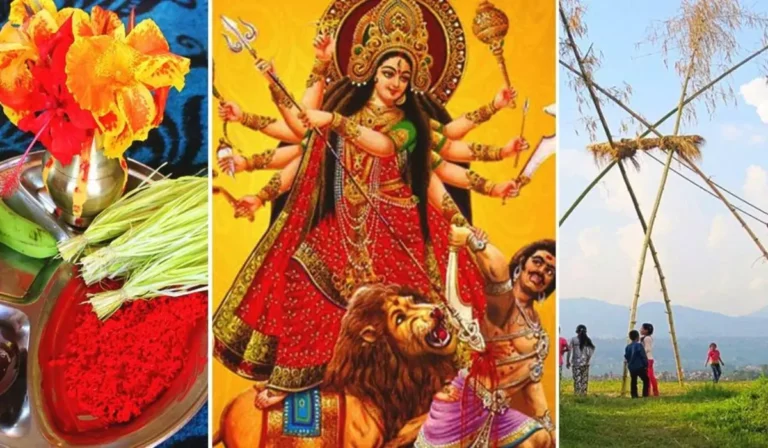- PUBLISHED
Everest Base Camp Elevation: Altitude, Trek Distance & Details
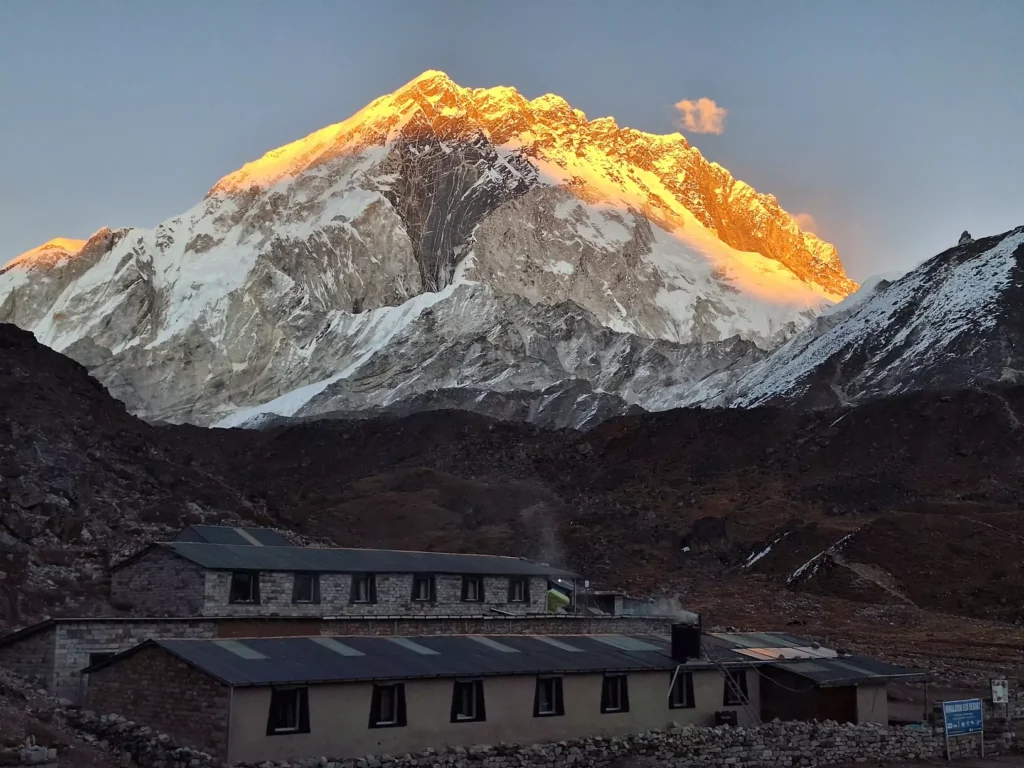
The Everest Base Camp Trek is an unforgettable high-altitude adventure that takes you from charming Sherpa villages and lush alpine forests to the base of the world’s tallest peaks. Along the way, you’ll be surrounded by iconic mountains such as Everest, Lhotse, Ama Dablam, and Nuptse, cross swinging suspension bridges over glacial rivers, visit ancient monasteries, and witness the breathtaking beauty of the Himalayan landscapes. Each day offers a mix of natural wonder, cultural encounters, and the thrill of steadily gaining altitude toward the ultimate goal, Everest Base Camp.
In this blog, we will cover everything you need to know about the trek, Everest Base Camp elevation, daily distances, key stops along the route, trek costs, and practical tips to help you prepare for a safe, enjoyable, and memorable journey through one of the world’s most iconic mountain regions.
Everest Base Camp Elevation and Altitude
Everest Base Camp (South, Nepal) sits at an altitude of 5,364 meters (17,598 ft), while most trekkers who climb the nearby viewpoint of Kala Patthar reach approximately 5,545 meters (18,192 ft). The trek begins at Lukla, which is around 2,840 meters (9,317 ft) above sea level. Over the course of the journey, trekkers gain roughly 2,500 to 2,700 meters, depending on the route taken and whether Kala Patthar is included in the itinerary.
Daily elevation gains generally range between 300 and 800 meters, which is why rest and acclimatization days are scheduled at key stops such as Namche Bazaar and Dingboche. These days help your body adjust to the altitude, improving appetite, sleep, and overall energy levels. Walking at a controlled pace, staying hydrated, and maintaining a consistent sleep schedule are essential strategies to reduce the risk of altitude sickness and make the trek more comfortable.
Trekkers considering other Himalayan routes may also look at the Manaslu Circuit Trek, which involves similar planning for acclimatization and altitude gain. This trek also offers stunning mountain scenery and remote villages, providing a challenging but rewarding alternative to Everest Base Camp.
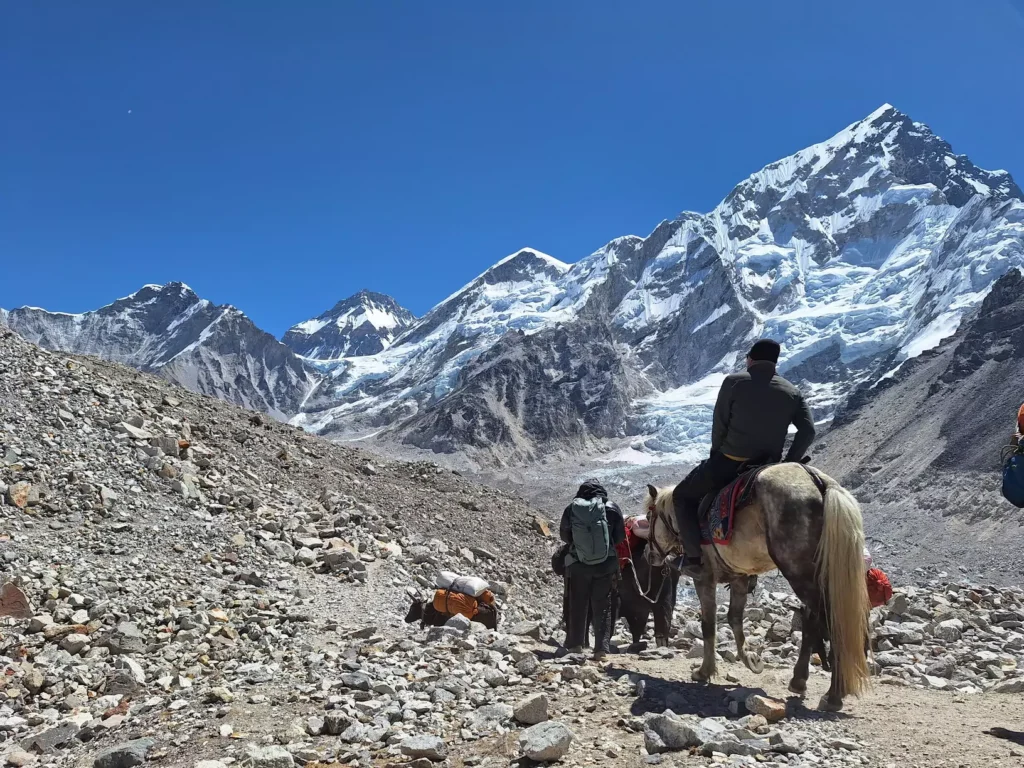
Everest Base Camp Trek Distance and Route
The Everest Base Camp trek covers roughly 65 kilometers one-way from Lukla to Everest Base Camp, making the round trip around 130 kilometers. Including arrival and departure days in Kathmandu, the trek typically lasts 12 to 15 days. Trekkers usually walk four to seven hours per day, depending on terrain, weather, and acclimatization needs.
Here’s a typical day-by-day itinerary:
- Day 01: Arrival in Kathmandu
- Day 02: Preparation day in Kathmandu – permits, briefing, and gear check
- Day 03: Fly to Lukla (2,840m) and trek to Phakding (2,610m)
- Day 04: Trek from Phakding (2,610m) to Namche Bazaar (3,440m)
- Day 05: Acclimatization day in Namche Bazaar (3,440m)
- Day 06: Trek from Namche to Debuche (3,820m) via Tengboche Monastery
- Day 07: Trek from Debuche to Dingboche (4,410m)
- Day 08: Acclimatization day in Dingboche; optional hike to Nagarjun Hill
- Day 09: Trek from Dingboche to Lobuche via Thukla Memorial Pass (4,940m)
- Day 10: Early morning trek from Lobuche to Gorak Shep to Everest Base Camp (5,364m); overnight in Gorak Shep
- Day 11: Pre-dawn hike to Kala Patthar and trek to Pheriche (4,240m)
- Day 12: Trek from Pheriche to Namche Bazaar (3,440m)
- Day 13: Trek from Namche Bazaar to Lukla (2,840m)
- Day 14: Fly back to Kathmandu and free day
- Day 15: Final departure
For trekkers interested in comparing different Himalayan routes will find that the Annapurna Circuit Trek involves a longer journey with multiple high passes, providing a different experience of Nepal’s mountains. The Langtang Trek, on the other hand, is shorter and offers scenic landscapes with less logistical complexity, making it suitable for those with limited time or lower altitude tolerance.
EBC Trek Map and Key Stops
The Everest Base Camp trek passes through several key stops, each offering unique scenery, culture, and opportunities for acclimatization. Understanding the role of each location helps plan daily pacing, rest, and photo opportunities.
- Lukla: Marks the dramatic mountain flight that sets the tone for the trek.
- Phakding / Monjo: Gentle valley walking perfect for warming up and adjusting to altitude.
- Namche Bazaar: The main acclimatization and resupply hub; a full rest day is recommended.
- Tengboche: A spiritual stop with classic views of Ama Dablam and surrounding peaks.
- Dingboche / Lobuche: High alpine villages used strategically for staged acclimatization.
- Gorak Shep: The launch point for both Everest Base Camp and Kala Patthar hikes.
- Everest Base Camp & Kala Patthar: EBC allows you to feel the presence of the world’s highest mountain, while Kala Patthar offers iconic sunrise panoramas.
A route map that overlays daily elevation and walking hours is invaluable for planning your trek, deciding when to rest, and identifying key photo opportunities.
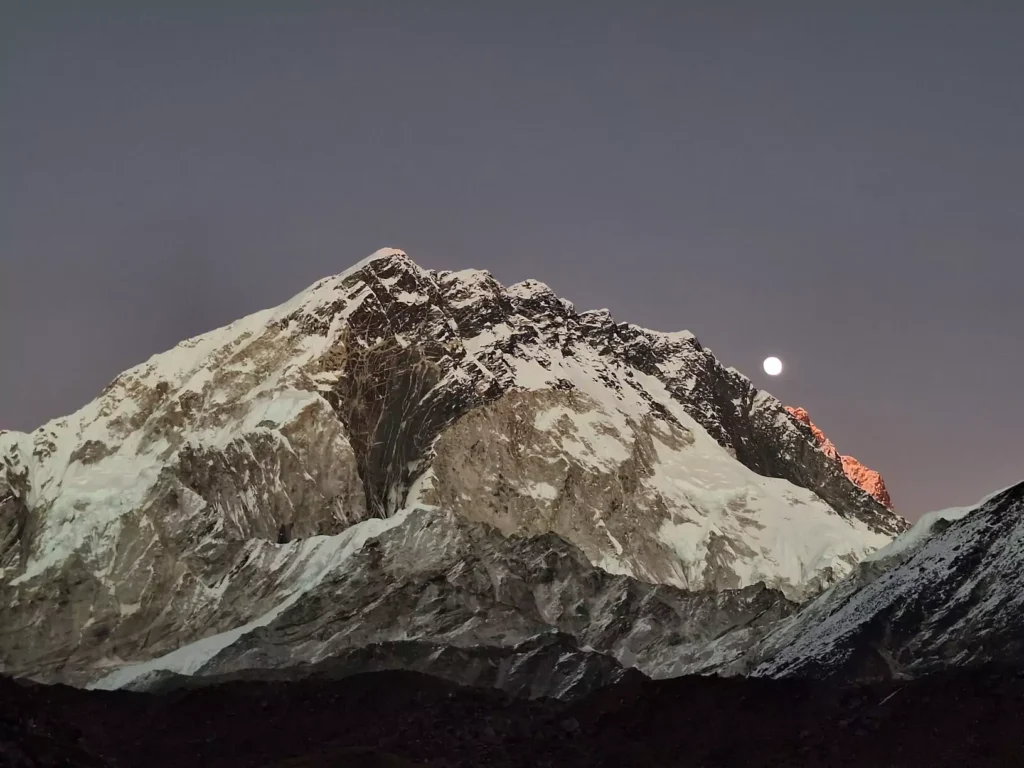
Everest Base Camp Trek Cost Overview
The typical cost for the Everest Base Camp trek ranges from USD $1,300–$1,550 per person, based on a standard minimum of two people per package. This price generally covers all core services needed for a safe and comfortable trek, though additional personal expenses should be expected.
Cost Includes
- Domestic flights (Kathmandu–Lukla–Kathmandu)
- Licensed guide and porter support
- Accommodation during the trek (teahouses)
- All meals during the trek (breakfast, lunch, dinner)
- Trekking permits (TIMS, Sagarmatha National Park, Local entry)
- First aid kit and emergency support
- Airport pickup and drop-off
- Pre-trek briefing and gear check
Cost Excludes
- International flights to and from Nepal
- Nepal visa fees
- Travel insurance (mandatory with evacuation coverage)
- Personal trekking gear
- Extra snacks, drinks, or desserts
- Hot showers and charging fees at teahouses
- Tips for the guide and the porter
- Extra nights in Kathmandu or Lukla due to flight delays
Trekkers looking for a shorter or lower-altitude option can consider the Mardi Himal Trek, which is less demanding on time and budget. For those seeking a more expedition-style experience with higher logistical complexity, the Manaslu expedition is a next-level alternative in both planning and cost.
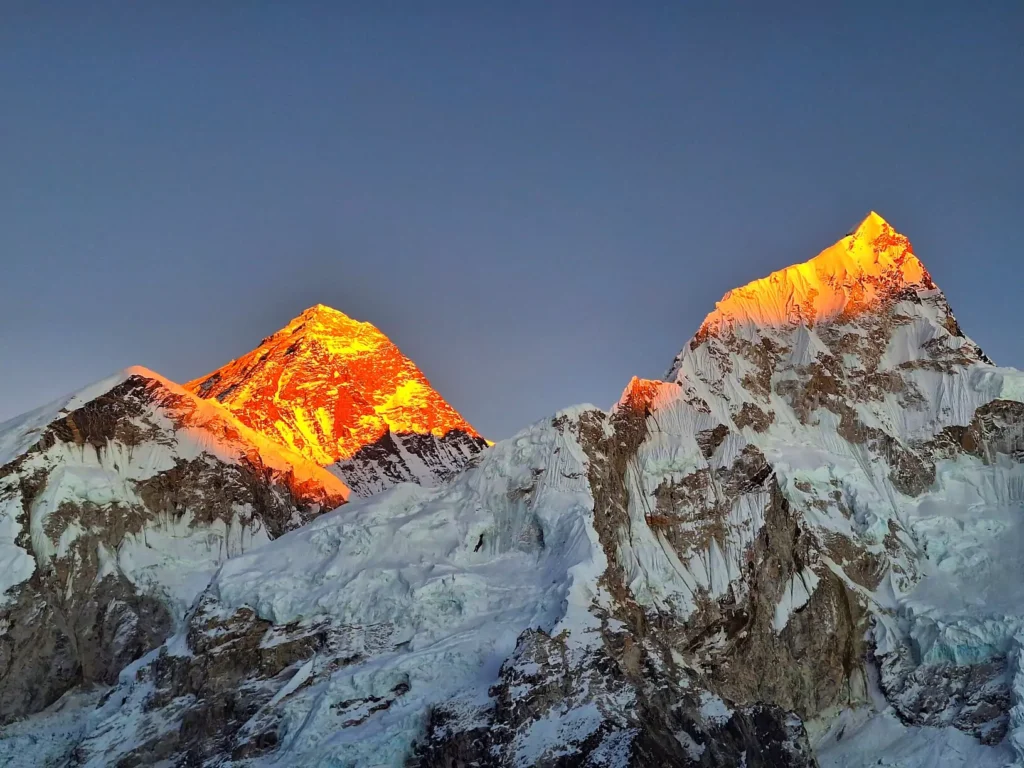
Tips for Trekking to Everest Base Camp
Preparation & Fitness
Train for endurance with long hikes, stair repeats, and steady cardio. Focus on building leg strength and core stability to handle the long ascents and descents along the trail. Regular conditioning helps reduce fatigue and makes daily trekking more manageable.
Acclimatization
Plan rest days in Namche Bazaar and Dingboche to allow your body to adjust to higher altitudes. Use short “climb high, sleep low” hikes to accelerate acclimatization, and monitor symptoms such as severe headache, confusion, or shortness of breath, descending immediately if they worsen. Everyone trekking at high elevations should know How to Prepare for High Altitude by following proper acclimatization strategies, hydration, and pacing.
Gear & Packing
Bring worn-in trekking boots, a warm down jacket, thermal base layers, a waterproof shell, a four-season sleeping bag (minimum −10 °C), a headlamp, power bank, and water treatment supplies. Everyone should know how to pack efficiently for high-altitude trekking: organize your gear into a ~30 L daypack for daily essentials and a larger duffel for porter-carried items, keeping your personal load around 10–12 kg, and plan for summit-style days. Everyone should know how to pack a trekking backpack ensuring comfort, accessibility, and safety throughout the trek.
Food & Teahouse Life
Eat frequently and maintain high caloric intake. Teahouse menus become limited at higher altitudes, so carry snacks, electrolyte mixes, and simple comfort foods. A quality sleeping bag and earplugs greatly improve comfort during the nights in teahouses.
Conclusion
The Everest Base Camp Trek is a remarkable high-altitude adventure, offering stunning Himalayan scenery, Sherpa culture, and the thrill of reaching 5,364 meters. Proper planning for elevation, route, costs, and gear is key to a safe and enjoyable experience. This trek is one of the best examples for trekking in Nepal, showcasing why the country is world-renowned for its diverse trails and breathtaking mountain landscapes.
From moderate trekking to high-altitude peak climbing and challenging hikes, BeThere guides each journey with safety, comfort, and breathtaking Himalayan scenery for an unforgettable adventure.
Table of Content
Frequently Asked Questions
How many kilometers is the Everest Base Camp trek?
The classic Everest Base Camp trek covers roughly 65 kilometers one-way from Lukla to Everest Base Camp, making the round trip about 130 kilometers. Daily trekking distances typically range between 10–15 kilometers, depending on terrain and acclimatization needs.
How long does it take to trek to Everest Base Camp?
Including arrival and departure days in Kathmandu, the trek generally takes 12 to 15 days. Trekkers walk four to seven hours per day, allowing time for acclimatization, rest, and enjoying key stops along the route.
What is the hardest day of Everest Base Camp?
The most challenging day is usually the trek from Lobuche to Gorak Shep and onward to Everest Base Camp, due to the steep ascent to 5,364 meters. Many trekkers also find the pre-dawn hike to Kala Patthar at 5,545 meters demanding but rewarding with panoramic sunrise views.
Can a beginner trek to Everest Base Camp?
Yes, beginners can attempt the trek with proper preparation. A good level of fitness, training for endurance, leg strength, and core stability is important. Planning rest and acclimatization days in Namche Bazaar and Dingboche is crucial to adjust to high altitudes safely.
What is the oxygen level at Everest Base Camp?
At 5,364 meters, oxygen levels are significantly lower than at sea level, roughly 50–55% of what you breathe at lower altitudes. Proper acclimatization, hydration, and pacing help minimize altitude sickness. Short “climb high, sleep low” hikes are recommended.
How much does it cost to trek to Everest Base Camp?
A standard Everest Base Camp trek package costs between USD $1,300–$1,550 per person (minimum two trekkers). This typically includes domestic flights, guide and porter support, teahouse accommodation, meals, trekking permits, first aid support, and pre-trek briefing.
Need help choosing a trail?
Connect with a local and plan your perfect trek.

